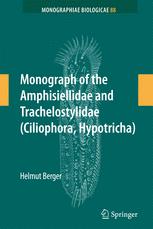

Most ebook files are in PDF format, so you can easily read them using various software such as Foxit Reader or directly on the Google Chrome browser.
Some ebook files are released by publishers in other formats such as .awz, .mobi, .epub, .fb2, etc. You may need to install specific software to read these formats on mobile/PC, such as Calibre.
Please read the tutorial at this link: https://ebookbell.com/faq
We offer FREE conversion to the popular formats you request; however, this may take some time. Therefore, right after payment, please email us, and we will try to provide the service as quickly as possible.
For some exceptional file formats or broken links (if any), please refrain from opening any disputes. Instead, email us first, and we will try to assist within a maximum of 6 hours.
EbookBell Team

4.0
26 reviewsThis book is the third of six volumes which review the Hypotricha, a major group of the spirotrichous ciliates. It is about the Amphisiellidae, the Trachelostylidae, and some genera of unknown position in the Hypotricha. Further, it comprises supplements to the Oxytrichidae and the Urostyloidea.
The Amphisiellidae are characterised by a more or less distinct ventral file, termed amphisiellid median cirral row. They produce their frontal-ventral-transverse cirri from six anlagen, a feature taken over from the ground pattern of the Hypotricha. Trachelostyla, the eponymous type of the Trachelostylidae, is an 18-cirri hypotrich, which lacks – like the amphisiellids – dorsomarginal kineties. The lack of these kineties indicates that both taxa branch off rather early in the hypotrich tree. The core amphisiellids (e.g., Amphisiella, Spiroamphisiella) and the trachelostylids are confined to marine habitats. By contrast, the other genera reviewed in this volume (e.g., Lamtostyla, Hemisincirra) are mainly terrestrial. A total of 89 species, distributed in 27 genera, are revised in detail, that is, almost all morphological, ontogenetic, faunistic, and ecological data, scattered in almost 600 papers are summarised. With the monographs of the Oxytrichidae, the Urostyloidea, and the Amphisiellidae and Trachelostylidae the interested scientist can identify more than 410 species of hypotrichs. The treatise offers taxonomists, cell biologists, ecologists, molecular biologists, and practitioners a thorough and up-to-date overview about this highly interesting group of ciliates.